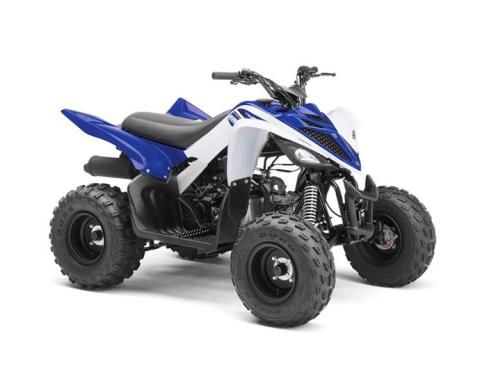Purpose
This safety alert is to warn of asbestos in components of some Yamaha YFM90R (RAPTOR) children's quad bikes.
Background
On 4 August 2017, Yamaha Motor Australia Pty Ltd recalled the Yamaha YFM90R, RAPTOR quad bikes, model code BD31 and BD34, manufactured between 2016 and 2016 because some vehicle parts may contain asbestos (front brake shoes, rear brake shoes and some spare parts).
The recalled models are:
| Model | Model code | Model year | Frame number | ||
|---|---|---|---|---|---|
| Prefix no. | From | To | |||
| YFM90R | BD31 | 2016 | AB11Y | 000202 | 006467 |
| 2017 | AB11Y | 006468 | 006891 | ||
| BD34 | 2017 | AB11Y | 006892 | 008909 | |
Yamaha YFM90R, RAPTOR ATV

Contributing factors
The use of all forms of asbestos has been banned in Australia since the end of 2003. This means that the import, manufacture, supply, sale and use or reuse of asbestos and products with any level of asbestos in them is prohibited for import or use, except under very limited circumstances.
However, in many countries asbestos is still used in manufactured products. Certification that goods are asbestos-free, which is provided to importers from overseas manufacturers, is sometimes found to be incorrect under our regulations. Some countries may classify goods asbestos-free where they meet a certain low level of asbestos content.
Action required
Available information indicates that these quad bikes do not pose a measurable health risk through normal use. However, consumers should not perform any maintenance, repairs or modifications that may contact or disturb bike parts that may contain asbestos.
Yamaha will contact owners about this recall through their Yamaha-registered address. Owners of these vehicles should arrange with their nearest authorised Yamaha dealer to have any parts that potentially contain asbestos replaced, free of charge.
Risk control
Importers should be aware of the varying definitions and standards applied in the country of origin and/or supply. Australian regulations apply at the border. Importers and suppliers should also be aware that in some countries Australia trades with, asbestos is added to brake components for domestic use.
The importer must ensure they do not import asbestos materials into Australia and suppliers must not supply asbestos materials. Both importers and suppliers must obtain testing certification that the goods are asbestos-free.
Suppliers, including vehicle dealerships, should be able to verify to customers that the goods don't contain asbestos. The cost of any tests or verification measures will be borne by the importer or supplier.
To reduce the risk of importing or supplying products containing asbestos, read the fact sheet Preventing goods or materials containing asbestos being supplied to workplaces in Queensland.